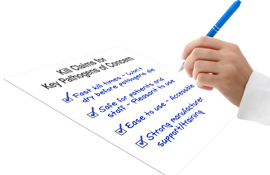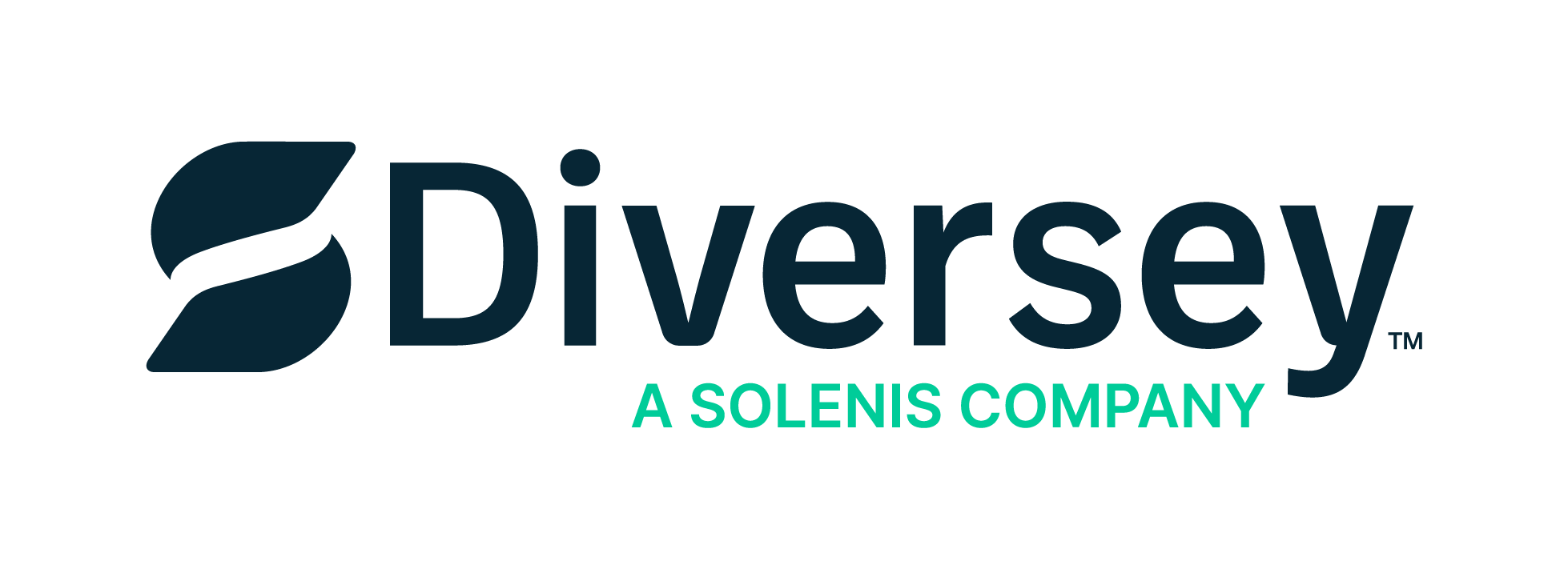
The selection of the right disinfectant is one of two essential components for effective disinfection. The other relates to the proper training and use of disinfectants and adherence to the manufacturer’s label instructions. The combination is effective for surface disinfection and can reduce patient risk and improve patient outcomes.
There are 5 key criteria that should be used when evaluating disinfectant products today*:
Each healthcare facility should evaluate the key healthcare-associated pathogens most common to HAIs and outbreaks in their facility. The product selected should be effective against these microorganisms Vegetative bacteria (such as S. aureus, Enterococcus, Escherichia coli, coagulase-negative Staphylococcus, Pseudomonas aeruginosa, Klebsiella species, Enterobacter species) are the pathogens that cause the vast majority of HAIs (~80%), then we recommend disinfectants that are effective against these pathogens. Check the product label to ensure that the disinfectant you choose is Environmental Protection Agency (EPA) registered to kill as many of the pathogens of concern as possible.
Ideally contact times should be greater or equal to the kill time, or the time listed on the EPA label to achieve disinfection. Wet contact time is a critical component of the disinfectant evaluation because if a product evaporates too quickly, it will not remain in contact with the microorganism for the necessary kill/contact time. Fast kill times are important because they provide confidence that pathogens are killed before the disinfecting solution can dry or be removed.
Beyond the antimicrobial activity and contact times for the disinfectant, we encourage you select a product for which your staff will not have to compromise safety for efficacy. By enabling the use of the product with lower risk, staff may be more willing to use it, which facilitates more consistent use, while reducing the risk of worker related injuries and the cost of PPE. Ensuring that staff is compliant with cleaning and disinfection protocol reduces your risk of HAIs and readmissions. Qualifying a product that is responsible has several components, including toxicity, flammability, personal protective equipment (PPE), and compatibility. The product should be nontoxic and should not cause any harm to users, patients, and visitors. The toxicity ratings for disinfectants are danger, warning, caution, and none. The facility should ideally choose a product with the lowest toxicity rating. In addition, one should check the safety data sheet (SDS) for the product’s flammability rating and select the product with the lowest flammability rating. The disinfectant label should contain information on what PPE is required when using the product. Most facilities would prefer a product that requires the least PPE but still offers the staff complete protection from exposure to adverse health effects. Facilities should select disinfectants with an acceptable compatibility profile to ensure that they will not cause damage during routine use to common healthcare surfaces, such as plastic, stainless steel, and other materials.
The easier a product is to use, the more likely the achievement of use compliance. To facilitate the use, disinfectants should be available in multiple and convenient forms, and should be composed of a durable substrate that will not easily tear, fall apart, or dry out quickly. We also recommend accessibility to materials, so staff can conveniently use, and be compliant with the requirements. Having a pleasant odor and safety profile are also positive influencers in the “conditions of use” of staff in making a decision to follow through all protocol.
After the user has considered the antimicrobial activity, kill and wet contact times, safety, and ease of use of the disinfectant, there are a few other factors for consideration. When selecting a disinfectant, it is important to look at the total use cost vs. the just the cost of the disinfectant solution. This review should include factors such as labor time to set up and use the product, laundering costs (if applicable), and the cost of non-compliance (i.e. not disinfecting due to safety concerns, inaccessibility or lack of time), also the risks and costs associated with increased HAIs. Other considerations include factors such as training and support offered by the manufacturer, costs, and standardization. The best suppliers go beyond delivering a disinfectant to the hospital and will offer on-site training for staff using the disinfectant, ongoing education (procedure cards and training materials, consultative services that will facilitate compliance), and substantial customer support.
**These criteria were adapted from Selection of the Ideal Disinfectant, Dr. William A. Rutala, et al. Infection Control and Hospital Epidemiology, Vol. 35, No. 7 (July 2014), pp. 855-865

